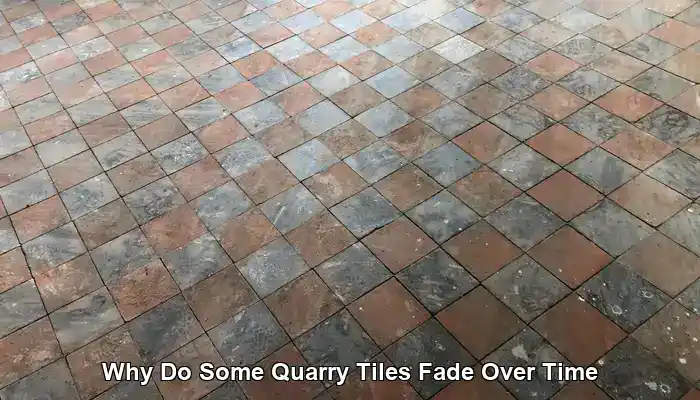
Quarry tiles are highly regarded for their remarkable durability, rustic charm, and timeless appeal. These versatile tiles are perfect for various spaces, from cozy kitchens to sunny patios, showcasing their dense, unglazed ceramic tiles that are engineered to handle heavy foot traffic and challenging conditions. Yet, despite their sturdy reputation, many homeowners and property managers observe a gradual fading that can range from subtle to pronounced over time. This fading can be perplexing, especially when tiles that once displayed vibrant hues of deep reds, warm browns, or rich terracottas start to appear washed out, uneven, or lifeless.
The fading of quarry tiles is not just a surface-level concern; it often indicates deeper issues such as wear, environmental stressors, or chemical damage. Outdoor tiles are relentlessly exposed to the elements—rain, frost, and temperature fluctuations that gradually erode their surface. The freeze-thaw cycle is especially detrimental, leading to micro-cracks and surface spalling that expose lighter inner layers and coarser textures beneath. Indoors, the challenges are similarly complex. High foot traffic can wear away the pigmented surface layer of the tile, revealing the inner body, which may contain larger particles and a variety of mineral hues. This natural stratification means that once the exterior is compromised, both color and texture can change dramatically, impacting the overall look of your flooring.
Additionally, exposure to various chemicals can have a significant impact on the fading of quarry tiles. Strong cleaning agents, particularly acidic or alkaline solutions, can damage sealers and strip away essential protective coatings. Over time, this leaves the tiles vulnerable to staining, efflorescence (the formation of salt deposits that can lighten the surface), and dirt accumulation in new pits and abrasions. These cumulative factors contribute to a faded, uneven appearance that detracts from the initial aesthetic appeal and overall charm of the tiles, necessitating a deeper understanding of proper care and maintenance.
Comprehending the reasons behind quarry tile fading is essential for preserving their unique character and extending their lifespan. This comprehensive article will delve into the various environmental, mechanical, and chemical factors that contribute to fading—both indoors and outdoors—and present actionable strategies for prevention and restoration. Whether you’re looking to maintain a historic floor or aim to preserve the beauty of your modern tiles, this guide will equip you with a deeper understanding of the intricate science behind quarry tile wear and maintenance.
Expert Recommendations: Must-Have Products for Daily Quarry Tile Maintenance
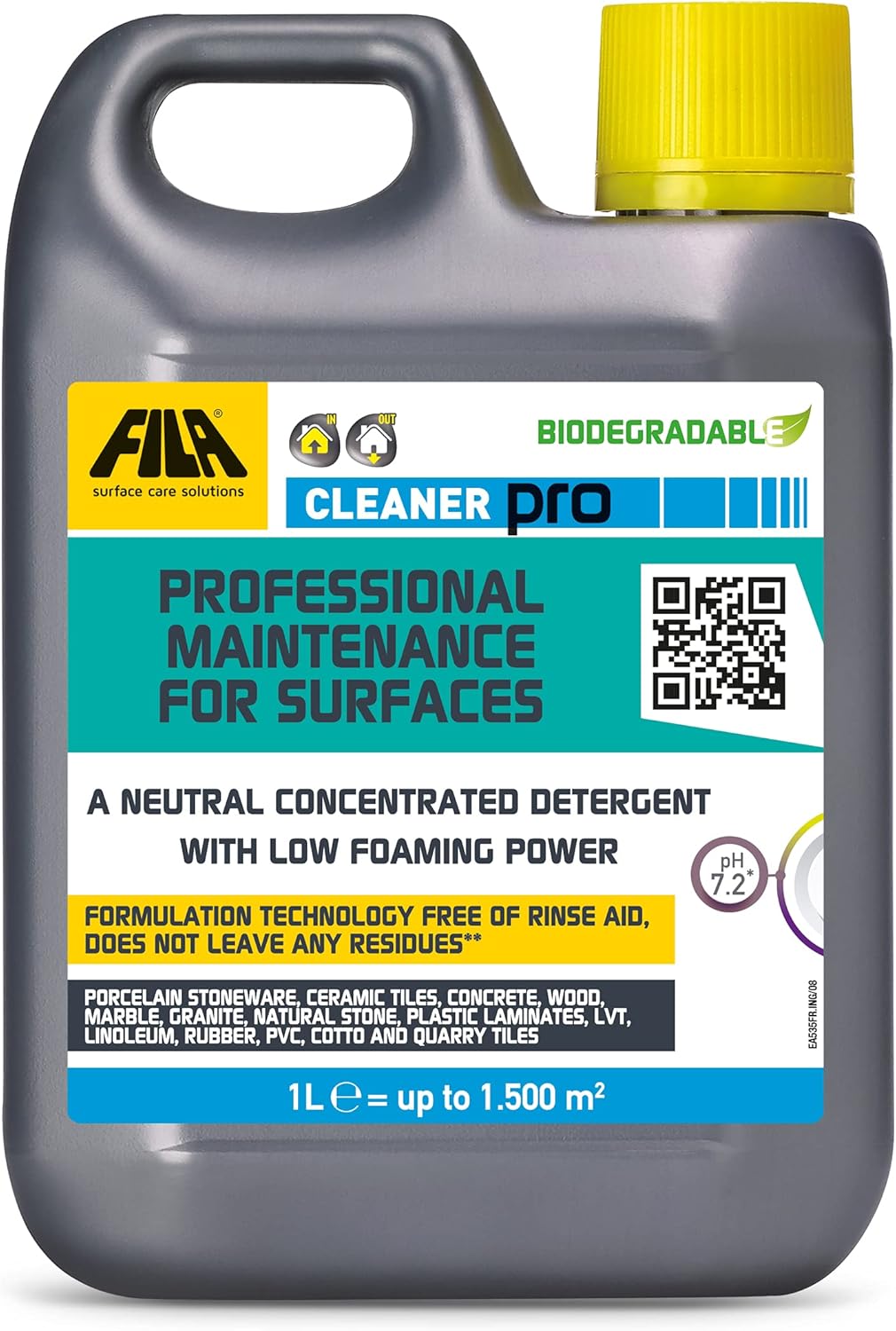
Fila Pro Floor Cleaner
|
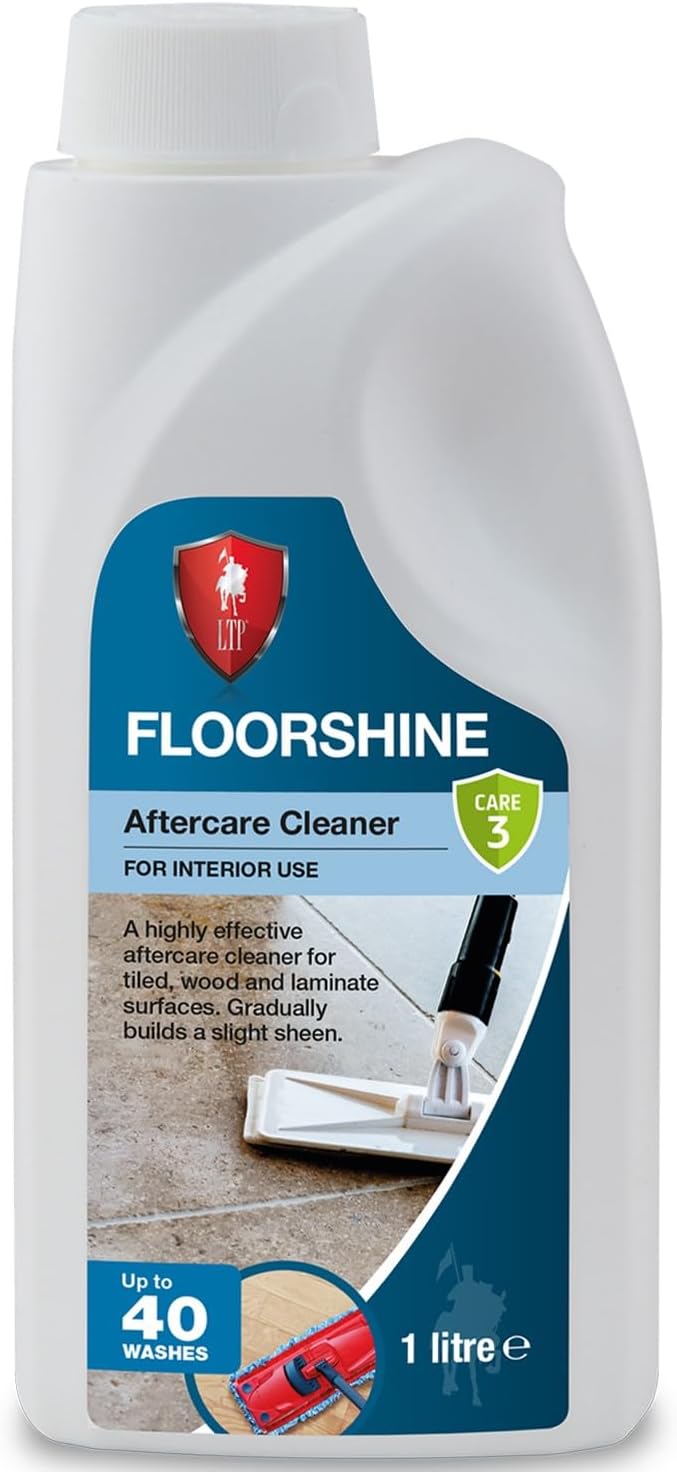
LTP Floorshine
|
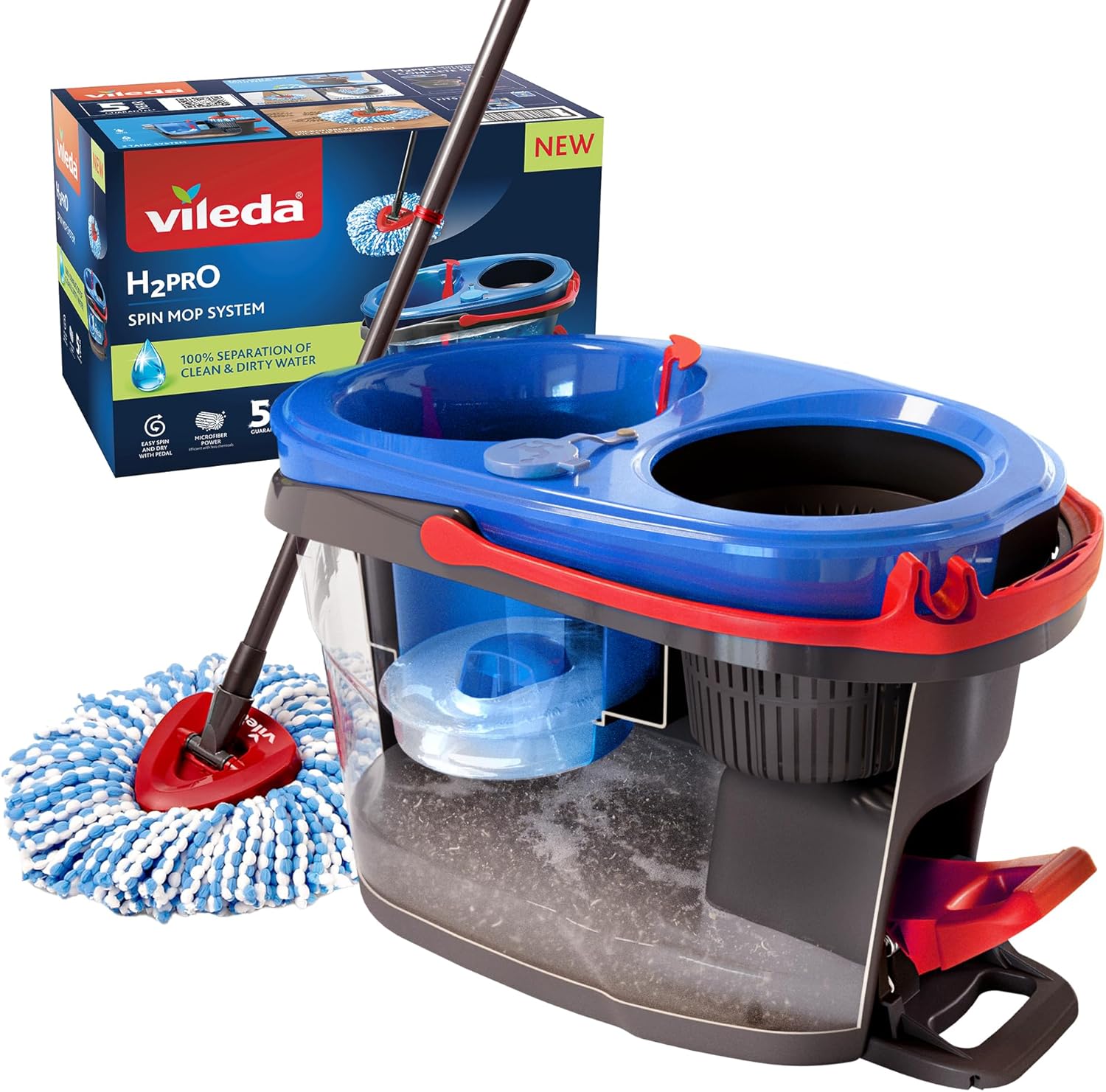
Vileda H2PrO Spin Mop System
|
Understanding Key Outdoor Factors Contributing to Quarry Tile Fading
Quarry tiles positioned outdoors are continually subjected to a barrage of environmental stressors that gradually diminish their color and texture. While these tiles are celebrated for their robustness, nature possesses an incredible ability to wear down even the most resilient surfaces over time, leading to noticeable fading.
The Weather’s Impact on Quarry Tile Durability and Appearance
One of the primary elements contributing to fading is the weather, particularly the effects of rain and the freeze-thaw cycle. Rainwater can infiltrate the porous surface of unsealed or inadequately sealed tiles, transporting minerals and contaminants that may stain or leach color from the tile. When temperatures drop, the moisture trapped within the tiles expands as it freezes, leading to micro-cracks and flaking on the surface. This repeated freeze-thaw action exposes the inner body of the tile, which often consists of lighter and less pigmented materials, ultimately resulting in a diminished aesthetic that detracts from the overall beauty of your outdoor space.
Surface Degradation and Exposure of Inner Layers in Quarry Tiles
Quarry tiles typically feature a dense outer crust that retains the most vibrant colors. As this outer layer erodes—due to foot traffic, abrasion, or natural weathering—the inner layer becomes more visible. This underlying layer is generally rougher, containing larger aggregate particles and exhibiting a lighter, more uneven hue. Consequently, the result is a patchy appearance that lacks the richness and vibrancy of the original surface, significantly affecting the overall aesthetic of your outdoor space and requiring careful consideration in maintenance practices.
The Effects of Chemical Exposure on Outdoor Quarry Tiles
Outdoor cleaning often necessitates the use of potent chemicals to combat moss, algae, or grime. Unfortunately, these strong cleaning solutions can degrade protective sealers and strip away vital coatings designed to protect the tiles. Once the sealer is compromised, the tile becomes increasingly susceptible to staining, mineral deposits, and accelerated wear. Over time, this chemical exposure plays a significant role in contributing to fading and surface dullness, further diminishing the tiles’ visual appeal and charm.
Identifying Significant Indoor Factors Leading to Quarry Tile Fading

While outdoor quarry tiles contend with environmental elements, indoor tiles face a distinct array of challenges that can equally be damaging over time. Factors such as foot traffic and cleaning practices contribute to the gradual fading of indoor quarry tiles, often driven by wear, surface degradation, and excessive chemical exposure.
Abrasive Wear and Loss of Surface Crust in Indoor Tiles
Quarry tiles are designed with a dense, pigmented outer crust that contributes to their rich color and smooth finish. Indoors, especially in high-traffic areas like kitchens, hallways, and commercial spaces, this crust gradually erodes. As the surface wears down, the inner body of the tile becomes exposed, which typically contains larger mineral particles and features a more porous structure. This transition leads to a noticeable alteration in both color and texture, causing earth-toned tiles to appear mottled or faded, with lighter patches where the crust has thinned, which significantly affects the aesthetic of the entire room.
Micro-Pitting and Soil Accumulation in Quarry Tiles
As the tile surface deteriorates, micro-abrasions and pits begin to form. These tiny indentations act like reservoirs for soil, grease, and cleaning residues. Over time, the accumulation of dirt in these pits creates uneven staining and dullness, which can be particularly frustrating for homeowners. Even regular cleaning may fall short in effectively removing embedded grime, resulting in a faded and blotchy appearance. This issue is especially prevalent in older floors that have not been adequately sealed or maintained, complicating the tile care process and necessitating more thorough cleaning strategies.
Efflorescence and the Migration of Minerals in Indoor Tiles
Efflorescence represents another significant factor in the fading of indoor tiles. This phenomenon occurs when moisture beneath the tile migrates to the surface, carrying soluble salts along with it. As the moisture evaporates, it leaves behind a white, powdery residue that can lighten the tile’s appearance and potentially damage the surface. Efflorescence is particularly common in areas lacking proper subfloor ventilation or where tiles are installed over damp concrete, making it crucial to address moisture issues to preserve the integrity and appearance of the tiles.
Impact of Chemical Overuse and Sealer Breakdown in Indoor Spaces
Indoor cleaning routines frequently rely on potent chemical agents, especially in commercial or food-preparation environments. While these products effectively eliminate grease and stains, they can also strip away essential sealers and protective coatings. Once the sealer is compromised, the tile becomes more porous, increasing its susceptibility to staining, wear, and further fading. Acidic or alkaline cleaners can even etch the surface, permanently altering its texture and color. Over time, repeated exposure to harsh chemicals accelerates the deterioration of both the tile and its finish, leading to a significant decline in the overall appearance.
Implementing Effective Maintenance Practices to Preserve Tile Colour
The fading of indoor quarry tiles is often preventable with diligent care. Utilizing pH-neutral cleaners, adhering to a regular sealing schedule, and avoiding abrasive cleaning tools can significantly prolong the life and aesthetic appeal of the tiles. For older floors showing signs of wear, professional restoration—including deep cleaning, re-sealing, and color enhancement—can help rejuvenate their original beauty and ensure they continue to enhance your home.
Practical Strategies for Preventing and Restoring the Beauty of Quarry Tiles
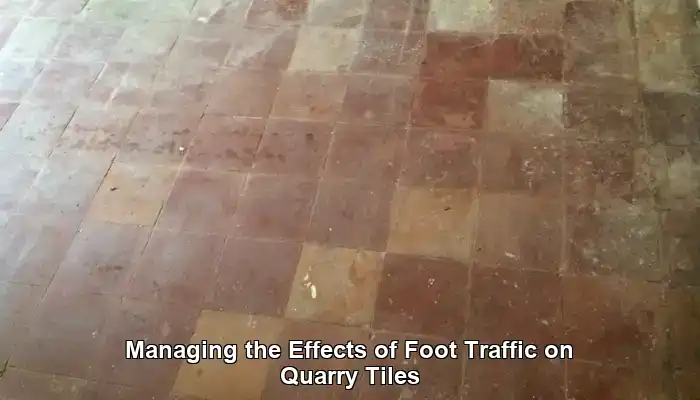
Understanding the reasons for quarry tile fading is merely the first step—the real value lies in knowing how to avert it and restore their original allure when wear eventually occurs. Whether your tiles are situated indoors or outdoors, proactive maintenance and thoughtful restoration can significantly extend both their lifespan and the preservation of their rich, earthy character.
Sealing Your Tiles: The Fundamental First Line of Defense Against Fading
One of the most effective methods for preventing fading is through proper sealing. Quarry tiles are inherently porous, and without a protective barrier, they readily absorb moisture, dirt, and chemicals. A high-quality penetrating sealer fills the pores without forming a surface film, allowing the tile to breathe while simultaneously repelling contaminants. For outdoor tiles, this precaution is vital to shield against rain, frost, and algae growth. Indoors, sealing assists in resisting staining from spills, cleaning agents, and foot traffic that can lead to premature fading.
Sealers should be reapplied periodically—typically every one to three years, depending on usage and exposure conditions. A straightforward water-drop test can help ascertain when resealing is necessary: if water penetrates instead of beads on the surface, it indicates the need for reapplication to maintain protective properties.
Smart Cleaning: Selecting the Right Products for Quarry Tile Care
Routine cleaning is crucial, but the choice of cleaning products is just as significant. Harsh chemicals, particularly those that are acidic or alkaline, can degrade protective sealers and etch the surface of the tile. Over time, this can lead to dullness, discoloration, and increased susceptibility to staining. Instead, select pH-neutral cleaners that are specifically formulated for stone or tile surfaces. These products gently lift dirt without compromising the integrity of the tile or leading to premature wear.
For stubborn grime or efflorescence, use targeted treatments sparingly and always follow up with a thorough rinse. Avoid bleach, ammonia, and vinegar-based solutions, as they may seem effective initially but can result in long-term damage and further contribute to fading.
Maintenance Techniques to Help Retain Colour and Aesthetic Appeal
Regular sweeping and damp mopping are effective practices to prevent soil accumulation and surface abrasion. Utilize soft-bristle brushes or microfiber pads instead of abrasive scrubbers, which can wear down the pigmented crust of the tile and lead to fading. In high-traffic areas, consider placing rugs or mats to minimize direct wear—especially near entryways or kitchen workstations where foot traffic is heaviest.
For outdoor tiles, pressure washing should be approached with caution. While it can effectively remove surface dirt, excessive pressure might erode the tile or force water into cracks, exacerbating freeze-thaw damage. If pressure washing is necessary, keep the pressure low and maintain a safe distance with the nozzle to avoid damaging the tiles and ensure their longevity.
Professional Restoration Techniques for Revitalizing Your Quarry Tiles
When fading becomes apparent and routine care proves insufficient, professional restoration can effect remarkable changes. Restoration specialists utilize a combination of deep cleaning, mechanical resurfacing, and color enhancement techniques to rejuvenate tired tiles and restore their original beauty.
- Deep cleaning eliminates embedded dirt, grease, and mineral deposits using specialized equipment and solutions designed specifically for quarry tiles.
- Mechanical honing or polishing smooths worn surfaces and restores texture, particularly on indoor tiles that exhibit surface pitting and wear from foot traffic.
- Colour enhancement sealers can deepen faded tones, especially in earth-toned tiles, enriching the natural pigments without introducing a glossy finish that could alter their intended look.
In cases of severe wear, restoration may also encompass regrouting, tile replacement, or the application of protective coatings tailored to the specific environment of the tiles, ensuring they remain beautiful and functional.
Developing a Strategic Long-Term Care Plan for Quarry Tiles
Preventing future fading necessitates a long-term perspective and a committed maintenance strategy. Establish a comprehensive maintenance schedule that includes regular inspections, cleaning, and resealing to keep your tiles looking their best. Educate household members or staff on appropriate cleaning methods and the significance of using suitable products that won’t harm the tiles. For commercial spaces, consider collaborating with a floor care professional to develop a custom plan based on traffic levels and environmental conditions that will protect your quarry tiles.
If your tiles are part of a heritage property or hold historical significance, consult with conservation experts before initiating any restoration efforts. Preserving the authenticity of older quarry tiles often demands specialized techniques and materials to ensure their longevity and historical integrity, which is crucial for maintaining their value.
Insights into Quarry Tile Care: Frequently Asked Questions
Can faded quarry tiles be effectively restored to their original beauty?
Yes, quarry tiles can frequently be restored through various methods such as deep cleaning, resealing, or even professional refinishing techniques, depending on the severity of the fading. Homeowners should explore their options for revitalizing the charm of their tiles to ensure they continue to enhance their spaces.
What cleaning frequency is recommended for maintaining quarry tiles?
Regular sweeping should be conducted weekly, with more intensive cleaning every few months to maintain their appearance and mitigate fading. Establishing a consistent routine will help preserve their vibrancy and ensure they remain beautiful for years to come.
Are there specific sealants designed explicitly for quarry tiles?
Indeed, specialized sealants formulated specifically for quarry tiles offer protection against moisture and UV exposure, enhancing both their longevity and aesthetic appeal. Homeowners should consult professionals for tailored recommendations to ensure the best possible care for their tiles.
Which cleaning products should be strictly avoided on quarry tiles?
Avoid using acidic cleaners, harsh chemicals, and abrasive scrubbers, as these can damage the surface and contribute to fading. Instead, opt for gentle, tile-safe products that will protect your investment and maintain the beauty of your floors.
How can I determine if my quarry tiles require resealing?
If water no longer beads on the surface or if the tiles appear dull and stained, it may be time to reseal. Regular assessments can help maintain optimal protection and extend the life of your tiles significantly.
Does indoor lighting significantly impact tile fading?
Indirect indoor lighting generally exerts less influence than UV rays; however, prolonged exposure to bright light can contribute to gradual fading. Homeowners should consider their lighting choices during space design to minimize potential damage to their tiles.
Is it advisable to use a steam cleaner on quarry tiles?
Steam cleaners can be excessively harsh for quarry tiles, potentially damaging their surface. It is advisable to adhere to recommended cleaning methods and avoid steam cleaning to preserve their integrity and ensure they remain beautiful for years to come.
Are some quarry tiles more susceptible to fading than others?
Yes, tiles made from inferior materials or pigments may fade more rapidly compared to those crafted from higher-quality materials. Homeowners should prioritize quality when selecting tiles to ensure durability and longevity in their flooring choices.
Does foot traffic significantly affect the lifespan of quarry tiles?
High foot traffic can indeed lead to wear and tear, accelerating fading and increasing the requirement for maintenance. Homeowners should implement strategies to effectively manage foot traffic and protect their tiles from unnecessary damage.
Is it feasible to completely prevent fading in quarry tiles?
While entirely preventing fading is challenging, consistent maintenance, proper sealing, and the selection of quality products can significantly reduce color loss over time and help maintain the beauty and vibrancy of your tiles.
The article Why Do Some Quarry Tiles Fade Over Time: A Guide first appeared on https://www.abbeyfloorcare.co.uk
The Article Quarry Tiles Fade Over Time: Understanding the Reasons appeared first on https://fabritec.org
The Article Quarry Tiles Fade: Key Reasons Behind the Discoloration Was Found On https://limitsofstrategy.com


You’ve captured a crucial aspect of quarry tiles beautifully, especially regarding their durability and rustic allure. As someone who has renovated a couple of properties over the years, I’ve come to appreciate not just the aesthetic charm of these tiles but also their practical considerations. Their ability to withstand heavy foot traffic makes them a go-to choice not only for kitchens but also for entryways or mudrooms, where resilience is key.